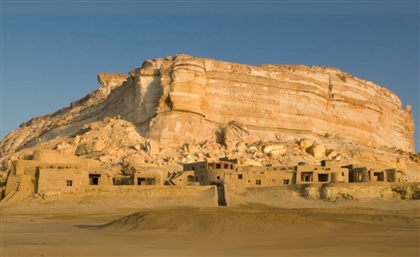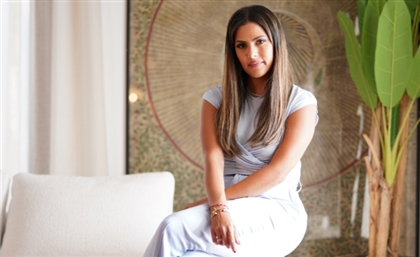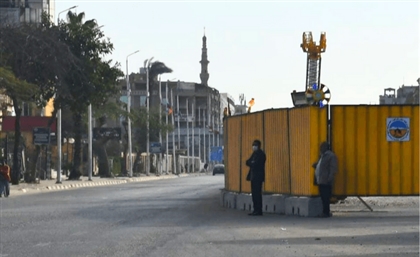The Male Gaze Through the Literal Eyes of Nawal El Saadawi
Describing her male characters primarily through their eyes, author El Saadawi subverts the ‘male gaze’ by making the gaze itself an object of scrutiny and critique by the female narrators.
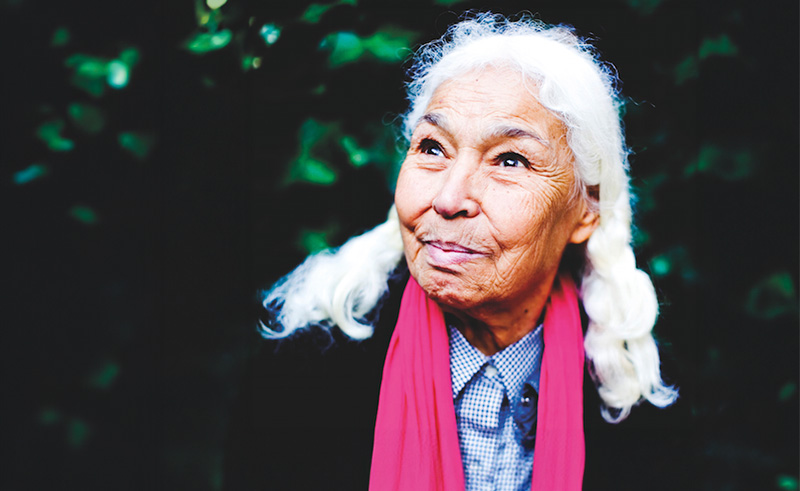
Originally Published August 15th, 2024
In her seminal 1975 essay ‘Visual Pleasure and Narrative Cinema’, British feminist film theorist Laura Mulvey introduced the concept of the male gaze, arguing that mainstream media often objectifies women through a heterosexual male perspective, positioning them as passive objects of visual pleasure.
Interestingly, in the same year, Egyptian author Nawal El Saadawi was writing her acclaimed novel ‘Woman at Point Zero’, which would be published in 1977. In this work, El Saadawi notably employs the eyes of her male characters as a primary descriptor, using them as symbols through which power, control, and corruption are measured. Through these eyes, El Saadawi critiques both their perspectives and their influence over the female protagonist.
El Saadawi’s approach aligns with Laura Mulvey’s analysis of the male gaze in the context of cinema - which assumes the audience, the perspective, and the camera lens are all male, thereby prioritising and serving the male viewpoint, yet through her female narrators, she turns the tables.
By making the gaze itself an object of scrutiny and critique through the female narrator, El Saadawi challenges the traditional male gaze. This theme had already been explored in her earlier works, such as ‘God Dies by the Nile’ and ‘Two Women in One’, before Mulvey’s essay was published, and went on to become a dominant element throughout El Saadawi’s entire literary oeuvre.
Nawal El Saadawi, who was born in 1931 in Kafr Ṭaḥla, Egypt, and passed away in 2021 in Cairo, was a trailblazing Egyptian writer, psychiatrist, and feminist. Educated at Cairo University and Columbia University, she dedicated her life to advocating for women's rights and critiquing societal oppression.
Her works, such as ‘Woman at Point Zero’ and 'The Hidden Face of Eve’, challenge patriarchy in an Egyptian context, and explore the struggles faced by women in the Arab world. El Saadawi's outspoken views have led to censorship, ostracism, and imprisonment, yet her profound contributions to feminist literature and social justice remain influential.
El Saadawi's nuanced use of eye symbolism extends beyond ‘Woman at Point Zero’, permeating her broader body of work. Each novel, while standing as a unique narrative, contributes to a larger critique of societal and gender dynamics.
And yet within each novel, the ‘eye’ has a different role to play…
Woman at Point Zero | 1977
A harrowing novel that explores themes of power, oppression and female agency, ‘Woman at Point Zero’ follows the life of Firdaus, a woman imprisoned for ‘murder’, as narrated by El Saadawi through a series of interviews conducted in a Cairo prison.
The novel’s portrayal of Firdaus’s life - a sex worker whose upbringing and youth was marked by a cycle of abuse, exploitation and resistance - highlights the pervasive corruption and control exerted by men. El Saadawi uses the symbolism of eyes to convey male characters' dominance, scrutiny and trivialisation of women.
“Two eyes – two eyes alone fastened themselves upon mine. No matter how far I shifted my gaze, or how much I moved my head, they followed me closely, tightened their hold. Everything was now enveloped in a growing darkness in which I could no longer discern the slightest glimmer of light, except for two jet black eyes encircled by two rings of dazzling white.” - Woman at Point Zero (Page 32)
“I looked deep into his eyes. I could tell he was a prince or from the ruling family, for there was a lurking fear in their depths.” - Woman at Point Zero (Page 82)
The theme of surveillance by the human eye permeates the novel, with a recurring motif of Firdaus being scrutinised while eating. This act of watching her consume food serves as a powerful metaphor for her existence as a woman, symbolising how her mere presence and right to occupy space are constantly monitored and controlled within male-dominated households - and by extension, a male-dominated world.
“...when I married, my husband ate twice as much food as I did, yet his eyes never lifted themselves from my plate.” - Woman at Point Zero (Page 44)
“The waiter bent over the table to place the other plates in front of me. He stretched out a hand with a plate full of food, but his eyes looked elsewhere, did not linger over my plate. The movement of his eyes as they avoided my plate cut like a knife through the veil which hung over my eyes, and I realised this was the first time in my life I was eating without being watched by two eyes gazing into my plate to see how much food I took. Ever since I was born those two eyes had always been there, wide open, staring, unflinching…” - Woman at Point Zero (Page 57)
Given her lifelong exposure to the relentless scrutiny of a man’s gaze, Firdaus becomes remarkably adept at perceiving and analysing men. She can swiftly discern the personalities of the men she encounters, relying solely on the way they look at her, revealing a deep understanding of the power dynamics expressed in their eyes.
“I looked into his eyes. They clearly said, ‘You’re a poor, miserable employee, unworthy of esteem, running after a bus to catch it. I’ll take you in my car because your female body has aroused me. It is an honour for you to be desired by a respected official like myself. And who knows, maybe some day in the future, I can help you to get a rise before the others.” - Woman at Point Zero (Page 68)
Two Women in One | 1971
‘Two Women in One’ tells the story of Bahiah Shaheen, a young medical student in mid 20th century Egypt who feels trapped by societal expectations and the rigid path imposed by her father. As she navigates her life in Cairo, Bahiah struggles with the dissonance between her outwardly obedient self and her inner world, where a desire for art, freedom and rebellion stirs, hence the title.
Where in ‘Woman at Point Zero’ the eye represented lust, power and judgement, in ‘Two Women in One’, the eyes - particularly Bahiah’s - represent rebellion and defiance against the opposing eyes of the novel’s men.
“When he fixed his blue eyes on her, she would stare back at him with her own black eyes. She knew full well that black is stronger than blue, particularly where eyes are concerned. Black is the origin, the root that reaches back into the depths of the earth.” - Two Women in One (Page 3)
Throughout the novel’s length, the eyes, as far as Bahiah is concerned, are treated as the main defining trait when assessing a person. Almost as though everything else is inconsequential in the grand scheme of things, save the eye.
“I don’t know ... but your eyes sometimes seem not to belong to you.” - Two Women in One (Page 14)
The eye in ‘Two Women in One’ is treated as a personal weapon, a tool through which power is exercised.
“She would be in the grip of a new, wild, nameless desire: the desire to be her real self and to trample all other wills down with hers, to tear her birth certificate to pieces, to change her name, to change her father and mother, to gouge out the eyes of those who had cheated and deceived her ... so that no one would be able to take her own eyes and replace them with eyes that were not hers.” - Two Women in One (Page 20)
While power is undoubtedly conveyed through eyes, El Saadawi also subtly critiques the privilege afforded to men, who can overlook the world with ease, while women like Bahiah must constantly scrutinise and analyse their surroundings.
“The eyes of the male students did not really see, or rather, they did not see things as they really were.” - Two Women in One (Page 7)
God Dies by the Nile | 1974
In ‘God Dies by the Nile’, a title officially banned in Egypt and published under ‘Death of the Only Man in the World’, El Saadawi writes of a small village, Kafr El Teen, where corruption and lust for women dominate. The story centres on Zakeya, an ordinary woman who quietly endures the systemic injustices inflicted by powerful men, including the Mayor and the Sheikh, who exploit and abuse women with impunity. However, when her nieces fall prey to these corrupt figures, Zakeya's passive acceptance turns into a fierce drive for justice.
In the novel, the male eye is used as a symbol for lust…
“His eyes followed the tall lithe figure of Zeinab as she walked along the river bank. He could see her firm, rounded buttocks pressing up against the long galabeya from behind.” - God Dies by the Nile (Page 11)
“But just at that moment he caught a glint in the Mayor’s eyes. They were looking in the direction of the river and he turned to see what had caught his attention. High up on the river bank a girl was walking. She held herself upright, balancing the earthenware jar on her head. ” - God Dies by the Nile (Page 11)
In contrast, the female eye is a symbol for defiance…
“His looks were becoming more direct. He examined her big, rough hands resting calmly on her lap. The wrists were bare of bracelets. The daughter of some poor peasant, he thought, who is used to digging the ground, and ploughing. Yet when she looked him in the face he saw something he had never noticed before in the eyes of women who belonged to poor peasant families. It was not just anger, nor was it just pride. It was something more powerful than either of them. ” - God Dies by the Nile (Page 13)
The theme of surveillance, the very same one employed in ‘Woman at Point Zero’, by the omnipotent eye is also present in ‘God Dies by the Nile’.
“She opened the door slowly to make sure that none of the neighbours would hear it creak, then ran swiftly on bare feet until she had almost reached the river bank, but the eyes spotted her, and surrounded her on every side.” - God Dies by the Nile (Page 43)
Eyes | 1989
‘Eyes’ is a short story by Nawal El Saadawi, based on the real-life experience of a young woman brought to El Saadawi by her father in 1988. The father had imposed stringent conditions on his daughter, allowing her to work only if she was entirely isolated from men. The woman found what seemed like the perfect job, working in the basement of a small, rarely visited museum. The story delves into the oppressive nature of her circumstances.
The short story faced censorship in Egypt due to its portrayal of veiling, particularly the niqab, in a negative light. Egyptian Television even proposed to adapt it into a film, but only on the condition that the protagonist would not be veiled, which would have undermined the core message of the narrative, which sought to emphasise a connection between the eyes, the only visible physical part of the woman.
In the basement of the small, secluded museum where she works, the young woman encounters a statue of a male figure. Unlike typical statues, its eyes seem disturbingly alive, radiating an unsettling intensity that makes her feel watched and haunted. The unnerving gaze of the statue unsettles her so profoundly that it begins to infiltrate her daily life. She starts perceiving the same eerie, statue-like eyes in the men she encounters on the street, amplifying her sense of being perpetually observed.
“The figure doesn't look anywhere with those eyes except at her. Since seeing it for the first time she has never stopped looking at it. If she turns her head away or leaves the office his eyes are always in front of her, continually looking at her with the same expression, just as if he were alive now, not seven thousand years ago. In his gaze there is neither the arrogance of a Pharaoh god nor the humility of a slave. What lies behind that gaze? She doesn't know.” - Eyes
The woman soon finds herself spiralling into dishevelment, overwhelmed by her obsessive fixation on the statue’s eyes. Her obsession intensifies until, eventually, she encounters the same unsettling gaze in a living, breathing person.
“She lifted her eyes to look at the traffic lights when suddenly she saw him among the people crossing the street. She recognised him immediately. The face was his face, with the ancient Egyptian features. The eyes were his eyes.” - Eyes
Despite the absence of male characters in the short story, the woman’s experience is suffused with the pervasive presence of the male gaze. Working in isolation in a literal basement away from men, and wearing a niqab, she is nonetheless haunted by the male gaze, in the form of a statue.
The statue’s unsettling, seemingly alive eyes suggest a continuity in the way men perceive women, highlighting that despite the passage of time, societal attitudes and the objectification of women remain stubbornly unchanged.
By examining the eyes of male characters and the pervasive scrutiny experienced by women, El Saadawi delivers a nuanced commentary on power, control, and objectification, showcasing her mastery of literary symbolism. Her use of the eyes as a symbol for dominance and surveillance goes beyond simple description, providing a critical lens through which to explore gender dynamics and societal control.
This approach, both innovative and clairvoyant, highlights how El Saadawi's work engages with complex themes of surveillance and objectification in ways that resonate deeply with contemporary discussions on gender and power, particularly in the Egyptian - and Arab - context.
- Previous Article Michael Bublé to Perform in Egypt’s New Capital
- Next Article Not Your Perfectly Iced Pinterest Wedding Cake
Trending This Week
-
Nov 26, 2025








